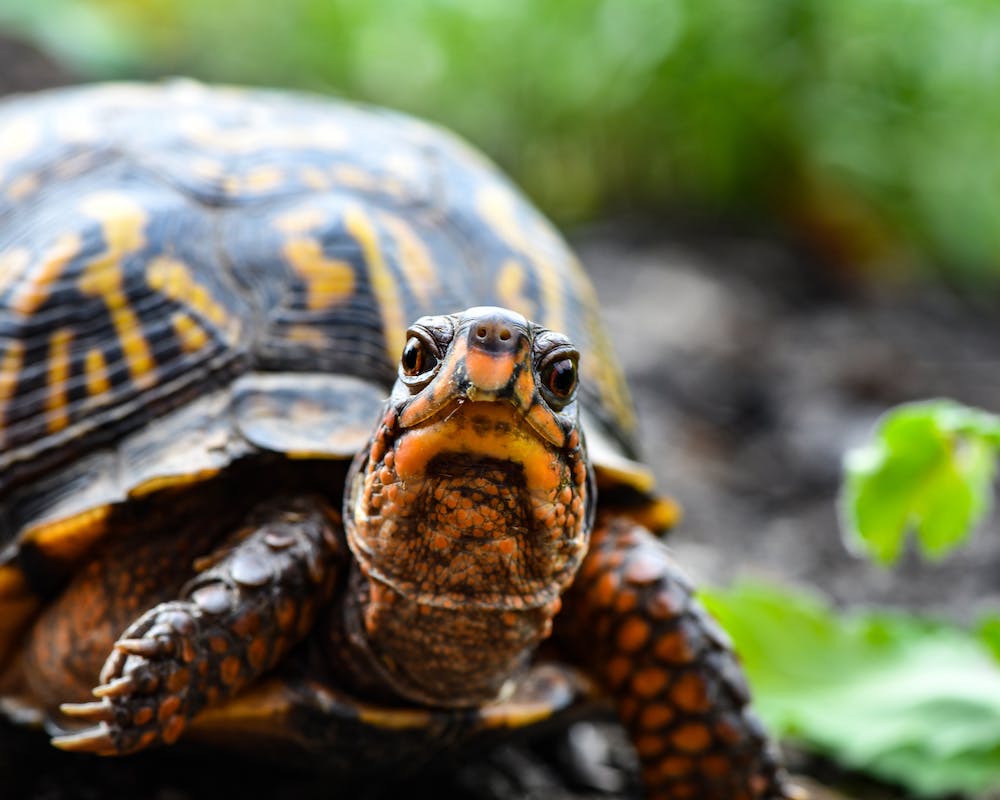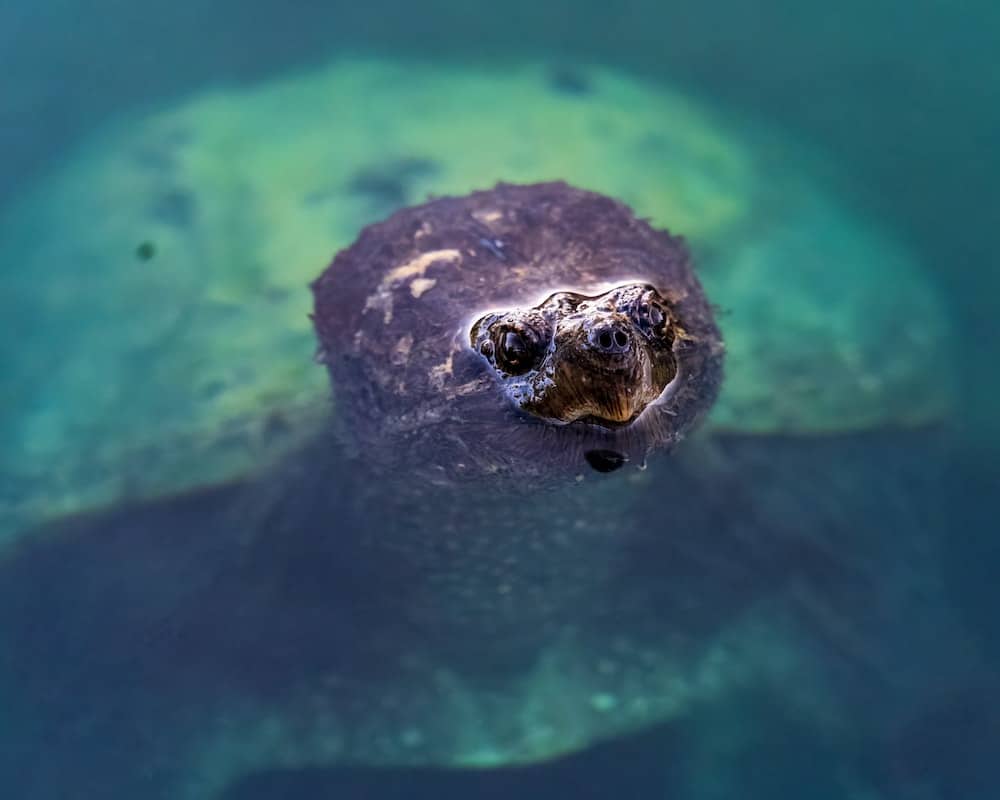Turtles are fascinating creatures that have captured the attention of nature lovers for ages. They have a unique appearance with their hard shells and slow movements. But one interesting thing about these reptiles is that they seem to dislike the color black. Some even make the mistake of thinking that turtles are colorblind, and in fact, they are not.
- Why Do Turtles Hate the Color Black?
- Color Perception: Exploring Their Visual Abilities
- Do They Display Aversion to Black Color?
- How Does Color Perception In Turtles Compare To Other Animals?
- Can These Reptiles See Colors At Night?
- Response To Black: Understanding Defensive Behaviors
- What Colors Attract Turtles?
- Why Do These Reptiles Hate Black Shoes?
- Conclusion
Why Do Turtles Hate the Color Black?
These reptiles associate black with their natural predators, such as snakes and birds. Additionally, their own shells have black as a dominant color leading to confusion and potential aggression toward black objects. While they don’t inherently hate black, it can induce stress and fear in them.
When they come across the black, react in unusual ways. They might avoid it or behave differently when they see it. This has sparked curiosity and led researchers to investigate why they have this dislike black. By understanding this peculiar behavior, we can gain a deeper understanding and unravel another intriguing aspect of their lives.
Color Perception: Exploring Their Visual Abilities
Like many reptiles, these animals have a unique visual system that differs from that of mammals and birds. While mammals and birds possess three types of color receptors (cones) that allow for trichromatic color vision, turtles have only two types of cones, resulting in dichromatic color vision.
This means that they perceive colors in a different way than humans and other animals with trichromatic vision.
Limited Color Discrimination Abilities
The two types of cones in turtles are sensitive to medium and long wavelengths, which correspond roughly to green and red light. They are less sensitive to short wavelengths such as blue light.
As a result, these reptiles have limited color discrimination abilities compared to humans. They can differentiate between some colors, particularly in the green and red range, but they may have difficulty distinguishing between colors that humans perceive as distinct.
Adaptation To The Aquatic Environment
Turtle’s visual abilities are closely tied to their natural environment. Many turtle species inhabit aquatic or semi-aquatic habitats, and their visual system has adapted to these surroundings. Water has different light absorption properties compared to air, and the wavelengths of light that penetrate water are different.
These reptiles have evolved to perceive the colors that are most relevant to their underwater environment, such as differentiating between shades of green and red that help them locate food, detect predators, or identify suitable mates.
Compensation Through Motion Detection And Contrast Sensitivity
It’s important to note that while they may have limited color vision, their visual system excels in other aspects, such as motion detection and sensitivity to contrast.
These abilities are crucial for their survival in their natural habitats, where they need to detect movement in the water or distinguish objects from their surroundings.
Do They Display Aversion to Black Color?
There is no scientific evidence to suggest that these reptiles display aversion specifically to black.
While they have unique visual systems and may perceive colors differently from humans, it is important to note that color perception does not necessarily equate to emotional responses or behavioral aversions.
- These reptiles exhibit a wide range of behaviors influenced by factors such as environmental stimuli, social interactions, and physiological needs. Their behavior is typically driven by instincts, survival strategies, and environmental cues rather than specific color preferences.
- Observations of turtles in their natural habitats or controlled environments have not indicated any consistent aversion or avoidance specifically related to the color black.
- It is worth mentioning that these reptiles may display responses to visual cues associated with potential threats, predators, or unfamiliar objects.
These responses are based on general patterns of behavior and visual recognition rather than a specific aversion to black.
Other factors such as movement, shape, or size might play a more significant role in eliciting behavioral responses from turtles.
How Does Color Perception In Turtles Compare To Other Animals?
These reptiles have dichromatic color vision, which is different from the trichromatic color vision found in mammals and birds. Trichromatic vision allows for better discrimination between a wider range of colors.
While they may have limited color discrimination abilities compared to humans and some other animals, they possess other visual adaptations that enable them to thrive in their respective environments.
Can These Reptiles See Colors At Night?
Most are diurnal or crepuscular, meaning they are active during daylight or twilight hours. While they may have some visual capabilities in low-light conditions, their visual acuity and color discrimination abilities may be reduced at night.
These reptiles rely on other sensory modalities, such as olfaction and touch, to compensate for reduced visibility in darker environments.
Response To Black: Understanding Defensive Behaviors
These reptiles rely on their shells as their primary defensive mechanism. However, they face a challenge when it comes to dealing with predatory black snakes. These snakes pose a threat to them, and their venom can circulate through a turtle’s body if a bite occurs within a 12-hour timeframe.
Unyielding Attacks Despite Hiding
Despite them retreating into their shells, these black snakes can still find ways to attack them. This prompts an innate instinct in turtles that triggers a fight or flight response when they encounter objects that are black.
Fight Or Flight Response
These reptiles exhibit a natural urge to fight off black objects due to their evolutionary instinct for defense. However, their flight response component is relatively weak, making them more inclined to confront potential threats.
Intimidation And Retreat
When a turtle perceives an aggressively moving black object, it can induce intimidation, leading the turtle to withdraw and seek refuge within its shell.
The Complexity Of Color Perception
These animals possess the ability to recall from their long-term memory whether they have encountered a black object before. If they encounter a familiar black object, their defensive response may be less pronounced compared to encountering it for the first time.
Acclimation Through Exposure
Continued exposure to the same black object can gradually desensitize turtles. With repeated encounters, they can become accustomed to the object, reducing their defensive reaction over time.
What Colors Attract Turtles?
These reptiles are attracted to various colors, and their preferences can vary depending on the species and their individual experiences. While they may not have the same color vision as humans, they can still perceive and respond to certain colors in their environment.
Here are some general observations regarding colors:
Green
Many are drawn to shades of green. This is likely because green vegetation is abundant in their natural habitats, such as ponds, lakes, and forests.
Green colors may signify potential food sources or safe resting places.
Red
Turtles, particularly aquatic species, can be attracted to red or reddish colors. In water environments, certain red tones may stand out against the background and catch their attention.
Some researchers suggest that these reptiles associate red with prey, as some insects or fruits they consume may have red hues.
Orange/Yellow
These warm tones can also capture the interest of these animals. In nature, some fruits, flowers, or other food sources that turtles consume may have yellow or orange colors, making them attractive.
Contrasting Colors
These reptiles are often responsive to contrasting colors, particularly when they are on the move. Objects or patterns with high contrast, such as black and white or bright and dark colors, can catch their attention and trigger a response.
It’s important to note that the degree to which turtles are attracted to specific colors can vary among individuals and species. Additionally, factors such as lighting conditions, movement, and the overall environment can influence their responses to different colors.
Why Do These Reptiles Hate Black Shoes?
They do not have a specific aversion to black shoes or any particular color of footwear. The notion that they hate black shoes is likely a misconception or a result of personal observations that may not be representative of turtles in general.
It is important to remember that they perceive the world differently from humans and may not have the same reactions or preferences when it comes to colors or objects.
If there have been instances where they have shown a response to black shoes, it is more likely due to other factors rather than the color itself. These reptiles are generally cautious and may exhibit defensive behaviors in response to sudden movements, vibrations, or unfamiliar objects.
The attention they give to black shoes may be a result of their interest in the novelty of the object or the movement associated with the wearer.
It is worth noting that turtle’s responses can vary depending on their personalities, past experiences, and environmental factors. Therefore while some may display curiosity or caution towards black shoes, it would be incorrect to generalize this behavior to all species.
Conclusion
In conclusion, the notion that they hate the black is not accurate. Turtle responses to colors are driven by instinctual behaviors, and their aversion to certain objects or movements is not specific to black.
Understanding the complexities of turtle behavior and color perception helps dispel misconceptions about their preferences and reactions.




